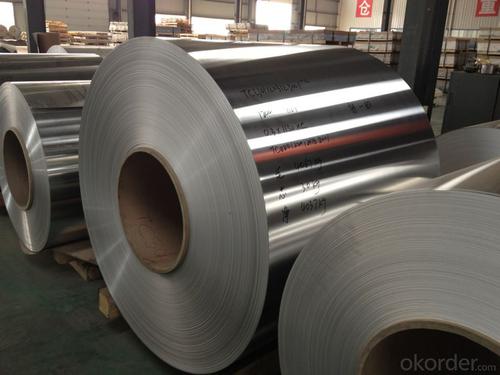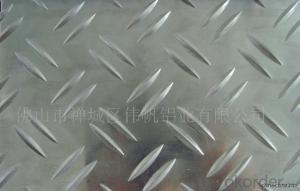Translucent Aluminum Oxide Sheets - Hot Drawn Aluminum Slab Stocks
- Loading Port:
- Shanghai
- Payment Terms:
- TT OR LC
- Min Order Qty:
- 10 m.t
- Supply Capability:
- 6000 m.t/month
OKorder Service Pledge
OKorder Financial Service
You Might Also Like
Specification
1.Structure of Product Description
Cold rolled aluminum sheet is widely used in the field of construction field and decoration field, etc.
There are many different grades, such as: 1000 series, 2000 series,
8000 series5000 series, 7000series,etc. The detailed grade are as follows: 1010, 1050,1100, 2024, 3003, 3005, 5083,6061,6063,7075,8011, etc.
The temper is include H14, H22, H24, H44,H112, etc.
2. Main features of the product
a.Competitive price
3. Image.

4. Product detailed sizes:
1000mm*2000mm, 1219mm*2438mm,1500mm*3000mm, etc.
5. FAQ:
What is the quality standard?
---Usually our standard is GB3880-2006 or others.
What is the width range?
---It is from 100mmto 2000mm, etc.
What is the length range:
---It is from 600mm to 6000mm, etc.
What is the MOQ for your products yet?
---Normally it is around 7tons/each size.
How many tons did you export in one year?
---Normally it is around 700 tons totally.
Where is your client from?
---Normally it is from USA, England,Canada, Fiji, Turkey,Sri Lanka, Bangladesh,etc.
What is your mainly products?
---Normally they are cold rolled and hot rolled and cold drawn aluminum sheet,small-5-bar checkered sheet,big-5-bar checkered cold rolled aluminum sheet, mirror finish aluminium sheet,aluminum sandwich panel, aluminum composite panel,etc.
- Q: How do aluminum sheets perform in terms of thermal expansion?
- Aluminum sheets have a relatively high coefficient of thermal expansion, meaning they expand significantly when exposed to heat and contract when cooled. This property can be both advantageous and challenging depending on the application, as it allows for easy shaping and forming but may also cause dimensional changes and potential structural issues under extreme temperature fluctuations.
- Q: Can aluminum sheets be used in food packaging?
- Yes, aluminum sheets can be used in food packaging. Aluminum is a common material choice for food packaging due to its excellent barrier properties, durability, and ability to maintain the freshness and quality of food products. It is also lightweight, recyclable, and resistant to moisture, odors, and UV light.
- Q: Can aluminum sheets be used for balcony railings?
- Yes, aluminum sheets can be used for balcony railings. Aluminum is a lightweight and durable material that is commonly used for this purpose due to its resistance to rust and corrosion. Additionally, aluminum can be easily shaped and customized to meet specific design requirements, making it a popular choice for balcony railings.
- Q: Can aluminum sheet be used for automotive body panels?
- Automotive body panels can indeed utilize aluminum sheets. In fact, aluminum is gaining popularity in the automotive industry due to its numerous advantages. Firstly, aluminum surpasses steel in terms of weight, leading to improved fuel efficiency and overall vehicle performance. Furthermore, aluminum boasts high resistance to corrosion, providing durability for body panels exposed to the elements. Additionally, aluminum exhibits remarkable formability, enabling the creation of intricate designs and enhancing design flexibility during vehicle production. Moreover, aluminum excels in absorbing crash impact, thereby enhancing vehicle safety. Nevertheless, it is important to acknowledge that utilizing aluminum for automotive body panels may necessitate specialized equipment and techniques for welding and repair purposes.
- Q: Can aluminum sheet be used for decorative purposes?
- Yes, aluminum sheet can be used for decorative purposes. Aluminum is a versatile material that can be easily shaped, cut, and formed into various designs, making it ideal for decorative applications. It can be used to create decorative panels, sculptures, signage, furniture, and many other decorative elements. Additionally, aluminum can be anodized or painted in a wide range of colors, allowing for further customization and enhancing its aesthetic appeal. Its lightweight nature and resistance to corrosion also make it a practical choice for both indoor and outdoor decorative purposes.
- Q: Can 101 aluminum sheets be purchased in small quantities or only in bulk?
- Aluminum sheets can typically be purchased in both small quantities and bulk, depending on the supplier and their policies. It is advisable to check with the specific supplier to determine the availability of purchasing 101 aluminum sheets in small quantities.
- Q: Are aluminum sheets suitable for cladding?
- Aluminum sheets are indeed appropriate for cladding purposes. The utilization of aluminum as a cladding material is widely favored due to its numerous benefits. Firstly, its lightweight nature facilitates easier handling and installation. This leads to a reduction in the overall weight of the cladding system and a minimization of structural loading. Secondly, aluminum showcases exceptional durability and resistance to corrosion, rendering it suitable for both interior and exterior applications. Additionally, it possesses weather-resistant qualities, ensuring that the cladding remains in optimal condition even in harsh climates. Furthermore, aluminum is an incredibly versatile material that can be effortlessly shaped and fabricated, thus allowing for a diverse range of design options. It may be painted or coated with various finishes to enhance its appearance and provide additional protection. Moreover, aluminum cladding necessitates minimal maintenance, as it does not require frequent cleaning or painting. In summary, aluminum sheets are an exceptional choice for cladding due to their lightweight nature, durability, versatility, and low maintenance requirements.
- Q: Are aluminum sheets resistant to abrasion?
- Yes, aluminum sheets are generally resistant to abrasion. Aluminum is known for its durability and strength, making it resistant to scratches or damage caused by abrasion. However, the level of resistance may vary depending on the specific alloy and thickness of the aluminum sheet. Thicker sheets with higher alloy content tend to provide better resistance against abrasion. Additionally, the surface finish of the aluminum sheet can also play a role in its resistance to abrasion. Overall, aluminum sheets are a reliable choice when it comes to withstanding abrasion in various applications.
- Q: Can aluminum sheets be embossed?
- Yes, aluminum sheets can be embossed.
- Q: Are 101 aluminum sheets suitable for solar panel frames?
- Yes, 101 aluminum sheets are generally suitable for solar panel frames due to their high strength-to-weight ratio, corrosion resistance, and ease of fabrication.
Send your message to us
Translucent Aluminum Oxide Sheets - Hot Drawn Aluminum Slab Stocks
- Loading Port:
- Shanghai
- Payment Terms:
- TT OR LC
- Min Order Qty:
- 10 m.t
- Supply Capability:
- 6000 m.t/month
OKorder Service Pledge
OKorder Financial Service
Similar products
Hot products
Hot Searches
Related keywords




























